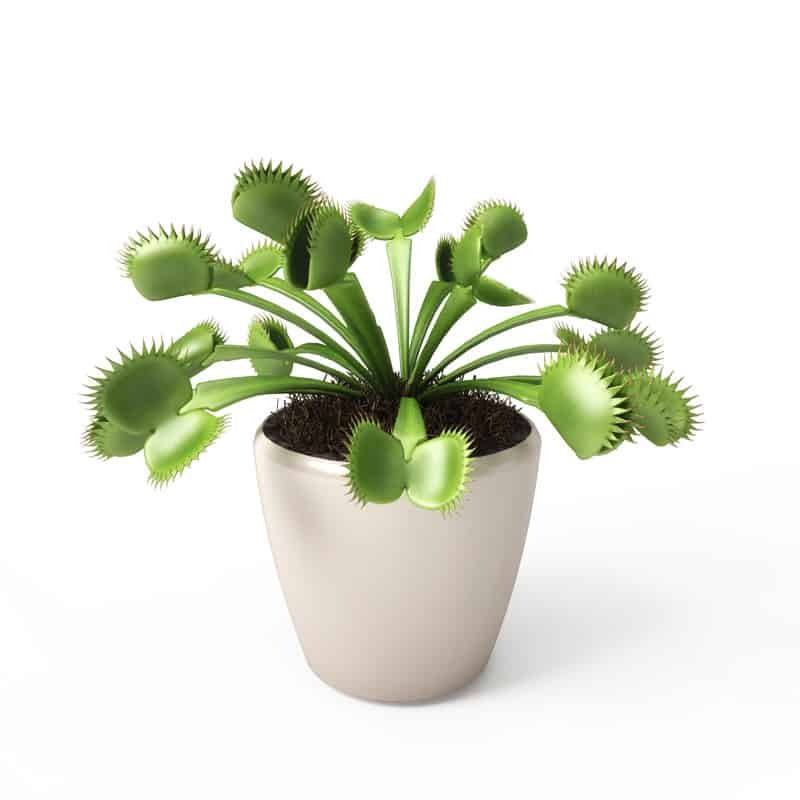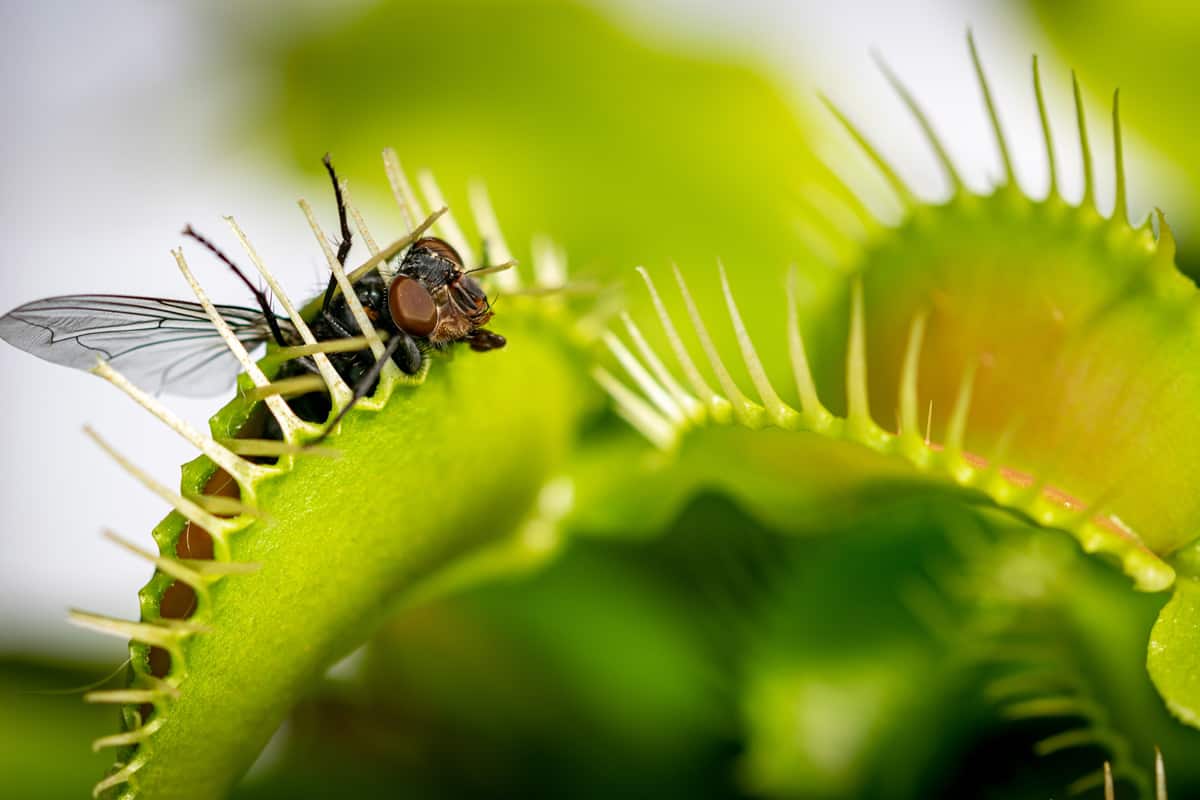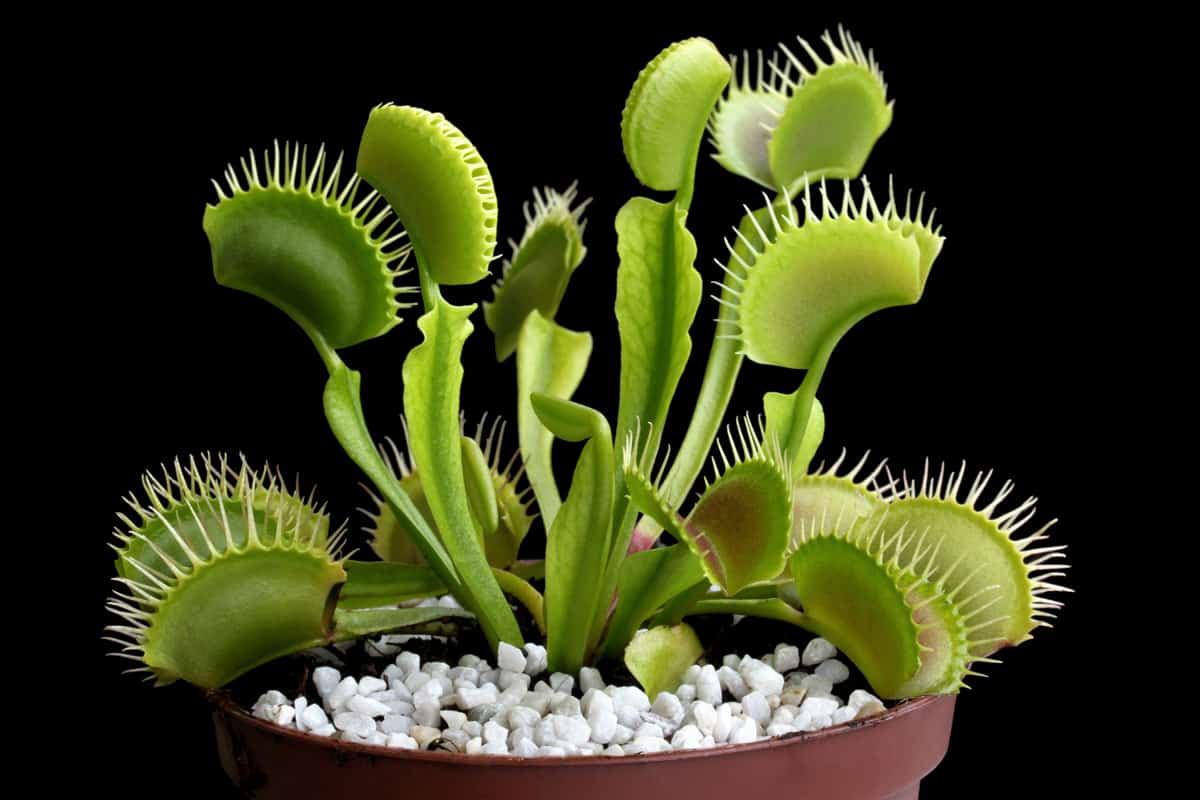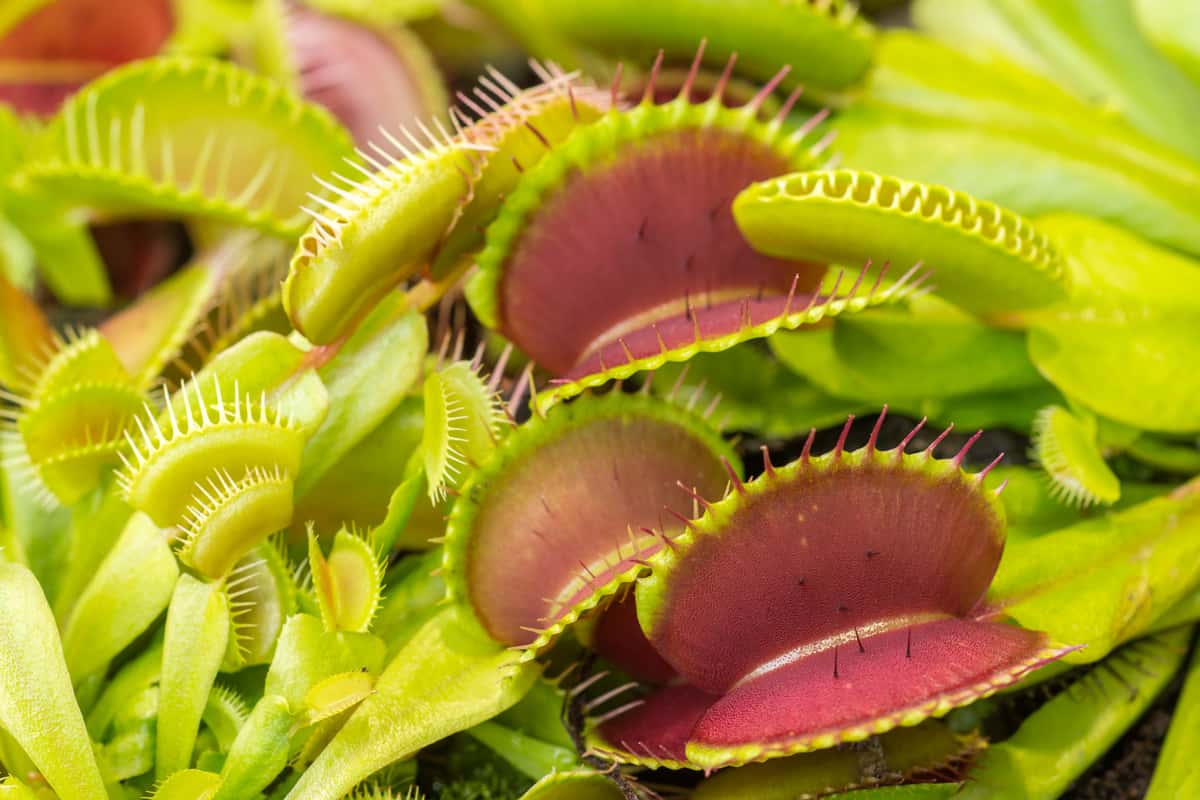Maybe you have noticed an overabundance of flies, gnats, and mosquitoes around your house and wonder if a Venus flytrap will help eliminate these pesky bugs. Or perhaps you're wondering how to care for a Venus flytrap correctly. For your convenience, we have conducted the researched and found the answers for you!
Yes, the Venus flytrap is a carnivorous plant that will eat flies, gnats, mosquitos, and a wide array of insects provided the plant is healthy. Always keep your Venus flytrap in direct sunlight and near where the bugs live.
Are you ready to roll up your sleeves and learn how to implement Venus flytraps into your pest prevention plan? Or what other forms of pest control work with Venus flytraps? We've researched these topics and have gathered quality research results to share with you!
![A big bunch of Venus flytrap, Do Venus Flytraps Eat Mosquitos, Flies, And Gnats? [Are They Good For Pest Control In And Around Your Home?]](https://gardentabs.com/wp-content/uploads/2022/09/Do-Venus-Flytraps-Eat-Mosquitos-Flies-And-Gnats-Are-They-Good-For-Pest-Control-In-And-Around-Your-Home-Pin-683x1024.jpg)
Do Venus Flytraps Eat Mosquitos, Flies, And Gnats?
Yes, the Venus flytraps will consume flies, gnats, and any type of insect it can fit in its trap. Please keep in mind that the flytrap does not draw mosquitos, but it will consume them if one lands in the flytrap.
Venus flytraps are attractive plants and will add a splash of color to your collection of indoor plants. However, they will not be able to consume enough bugs to purge an entire pest infestation within the home.
Click here to view a live Venus flytrap on Amazon.
Perhaps you are interested in growing your very own Venus flytrap from seeds?
Click here to view Venus flytrap seeds on Amazon.
Are Venus Flytraps Good For Pest Control In Homes?

Generally, Venus flytraps are good for catching and digesting a few bugs here and there. However, if you have an infestation of bugs in your home, a Venus flytrap won't be able to consume enough bugs to reduce the bug population.
You could try using Venus flytraps in conjunction with other methods to eliminate the pests. Consider using an indoor bug trap or a fruit fly trap to rid your home of those annoying bugs.
Suppose those methods are not enough to reduce and eliminate the pest infestation. Consider contacting your local pest control company for professional advice.
Click here to view the Katchy indoor insect trap on Amazon.
Click here to see the Terro fruit fly killer on Amazon.
Are you thinking about adding a Venus flytrap to your home? Take a look at this guide to read more: How Much Does Venus Flytrap Cost And Where Can I Buy One?
What Bugs Will A Venus Flytrap Eat?
![A big bunch of Venus flytrap, Do Venus Flytraps Eat Mosquitos, Flies, And Gnats? [Are They Good For Pest Control In And Around Your Home?]](https://gardentabs.com/wp-content/uploads/2022/09/Do-Venus-Flytraps-Eat-Mosquitos-Flies-And-Gnats-Are-They-Good-For-Pest-Control-In-And-Around-Your-Home.png)
The Venus flytrap will consume several different types of bugs for nutritional purposes. Some of these include:
- Ants
- Beetles
- Flies
- Grasshoppers
- Gnats
- Mosquitos
- Spiders
Why Is My Venus Flytrap Turning Red?
When you notice that your Venus Flytrap is showing signs of redness on the flytrap, this is a sign that the plant is healthy. Proper nutrition and direct sunlight will cause the plant to display vibrant red within the walls of the flytrap, contrasting the bright green leaves and stems.
Fun fact—the interior of the Venus fly trap is red to help entice small insects to land on the flytrap.
How Often Does A Venus Flytrap Need To Eat?
Venus flytraps need to consume insects about every one to two weeks. Provided the plant is in a location where it can catch its own insects, it will consume enough to stay healthy.
However, if you keep the plant indoors with minimal access to bugs, you will need to supplement the Venus flytrap's diet. Consider purchasing live or freeze-dried crickets and worms from your local pet store to feed the plant when there are few insects around for the plant to consume.


Click here to view freeze-dried Venus flytrap food on Amazon.

What Happens If A Venus Flytrap Closes On Nothing?
Suppose you brush the flytrap and it closes without a bug to digest. It will not start the digestion process. The Venus flytrap will reopen in 24 hours undamaged and ready to catch a live insect.
When the flytrap closes on nothing, it will not harm the plant. Moreover, it is best to avoid touching the flytraps to prevent them from opening and closing unnecessarily.
What Type Of Pot Does The Venus Flytrap Need?
A glazed ceramic pot, a plastic pot, or a terrarium are considered good options for potting the Venus flytrap.


Click here to view the Venus flytrap Terrarium on Amazon.
Where Should I Place My Venus Flytrap?
For the best results, place your Venus flytrap in direct sunlight. Simply put, "direct sun" means the plant needs at least six hours a day of direct unfiltered sunlight to grow and remain healthy. Please note that the optimal amount of sunlight is 12 hours daily. However, a minimum of six is adequate.
How Often Should I Water My Venus Flytrap?

Please note that you cannot water the Venus flytrap with tap water; only use distilled, rain, or osmosis water for your Venus flytraps.
Also, water the plant reasonably often to keep the soil moist. The watering frequency will change based on the climate, the humidity levels, and which zone you live in.
How To Find Your Growing Zone?
For the best results, use the link below to determine which zone you are located within and how those growing conditions pertain to your home and garden.
Fun fact—the Venus flytrap is considered native to North and South Carolina and will adapt to many different environments provided the plant receives the correct care.
Take a look at the USDA Plant Hardiness Zone Map.
Can Venus Flytraps Harm Humans?

No, Venus flytraps are not harmful to humans because the flytrap is not strong enough to cause damage to a human. Instead, a human could easily harm a Venus flytrap if you are not careful with the plant and provide it with adequate water and sunlight.
Please note that putting your finger or anything in the flytrap could damage it, depending on the size.
How Big Can A Venus Flytrap Get?
The Venus fly traps will grow from six inches to one foot in height, and the width will vary between six to eight inches. Also, the length of the leaves will range between three to six inches.
What Is The Lifespan Of A Venus Flytrap?
Venus flytraps have been documented to live up to 20 years in their habitat of origin. However, domesticated Venus flytraps will live up to anywhere between 10 and 20 years provided the plant has ample sunlight and nutrition.
Are you interested in learning more about the lifespan of a Venus flytrap? Check out this post: How Big Do Venus Flytrap Get & How Long Does It Live [Inc. Indoors Vs. Outdoors]?
Safety Precautions To Keep In Mind
Venus fly traps cannot be harvested from the wild. Attempting to do so is considered illegal. However, purchasing a Venus fly trap is legal.
For the best results, only purchase your Venus flytraps from a reputable floral shop or online via a verified seller to avoid any issues with illegally harvested Venus flytraps, which could result in fines.
In Closing

We appreciate you taking the time to read our article, and we hope you have found it helpful for ridding your home of bugs! Learning about Venus flytrap plants and caring for them is an excellent way to reconnect with nature and expand your indoor plant collection.
Please be sure to check out some of our other posts before you go to help further your horticulture knowledge base:
How To Compost Garden Waste At Home [3 Foolproof Techniques]
How To Harvest Venus Flytrap Seeds [Top Tips For Collection And Propagation]?




